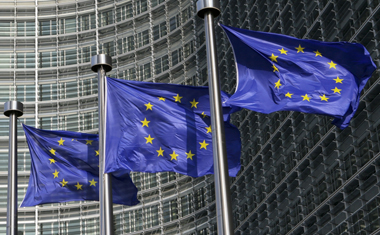MiFID II faces a tough road ahead
Despite last month’s European Parliament vote, MiFID II will continue to be dogged by contentious issues and political infighting between member states ahead of the European elections on 22 May, say industry observers.
Some of the key problems include vigorous national lobbying, the clash of inconsistent definitions between separate regulations, the challenge of applying new rules to FX and fixed income, incompatible national standards and a lack of preparation for a second wave of rules on trade reporting.
MiFID II is a revision of the Markets in Financial Instruments Directive, which came into force in 2007. Its primary goals are to increase transparency and fair competition in capital markets, and to bring other non-equity asset classes such as FX and fixed income under the scope of the single European rulebook.
“It surprises me to say this, but I actually feel sorry for the bureaucrats in Brussels,” said Jeremy Taylor, specialist in derivatives at consultancy Rule Financial. “In the UK and in Germany, national politicians are quite protective against any perceived threat to their domestic industries. There’s a real issue lying ahead with open access to clearing services. Meanwhile, a lot of banks don’t fully realise that MIFID II is going to have a major impact on trade reporting.”
In Germany, derivatives exchange Eurex is one of the two dominant derivatives venues in Europe, alongside rival Liffe. Until now, Eurex has operated a siloed clearing model in which participants trading on Eurex have no choice but to use the clearing house of the incumbent exchange. However, MiFID II establishes the principle of open access to clearing – meaning that participants should be able to choose an alternative clearing provider if they so wish. According to Taylor, Germany has lobbied furiously against that provision.
“It’s highly political,” he said. “Germany has been vocal in calling for the open clearing requirement to be watered down. One of the major concerns we have for MiFID II is that the EU elections may be contributing to the political baggage surrounding the directive. There are plenty of anti-bank politicians lobbying on a populist basis, and that makes for poor regulation.”
Taylor added that experience suggests the months ahead will be fraught with difficulty for the European authorities. In particular, he pointed out that Dodd-Frank in the US was hotly contested and resulted in legal action by Bloomberg and others in an attempt to change the legislation.
Meanwhile, the scope of the new rules is also leading to conflicts of interest and conflicts of interpretation, both between EU member countries and in some cases between the EU regulations themselves. Virginie O’Shea, senior analyst at Aite Group, warns that the definitions contained in regulations such as AIFMD and MiFID II may be incompatible with each other, leading to further problems.
“The rules haven’t been thought through in a consistent and joined-up manner,” said O’Shea. “So the way an asset manager is defined in one text is slightly different from the other, for example, which means a market participant may have to report a trade under one piece of regulation but not under the other, or they can use a reference price waiver under one rule, but not the other. It’s ridiculous.”
O’Shea points to the gradual eclipse of the European Commission’s planned Securities Law Directive, which was originally intended to set up a framework for supervising financial institutions and managing cross-border failures. While a draft text was released in March 2012 – four months later than planned – it has since made only slow progress towards its 2015 implementation goal. The European elections are unlikely to make matters easier, she added, since they will simply bring fresh personalities to the debate. In the meantime, significant barriers to clearing and settlement between different European countries remain.
“The way you hold funds is different in France, Germany, Spain and the UK and that’s a problem,” she said. “Even the way we categorise derivatives is different, despite EMIR. It’s a directive, so national regulators have scope to implement it. The result is France has gone one way and Britain has gone the other over FX derivatives. It’s not consistent.”
Other problems concern the attempt to bring together multiple asset classes under a single framework. In particular, non-equity markets that are considered “sufficiently liquid” are required to be traded on OTFs, the new category of trading venues created by MiFID II. However, the definition of sufficiently liquid is proving problematic. Furthermore, according to Taylor there will be more changes required to the trade reporting rules for derivatives – despite the recent EMIR deadline in February.
“Banks were all relieved that 12 of February trade reporting deadline under EMIR has passed, but they haven’t realised that MiFID II is coming with new trade reporting rules that will have a huge investment impact,” he said. “In EMIR you trade report on a T+1 basis. MiFID II will tighten that up to near real time, and it will specify what fields you have to use in reporting. That’s an extra layer of technology cost for banks to think about.”













































